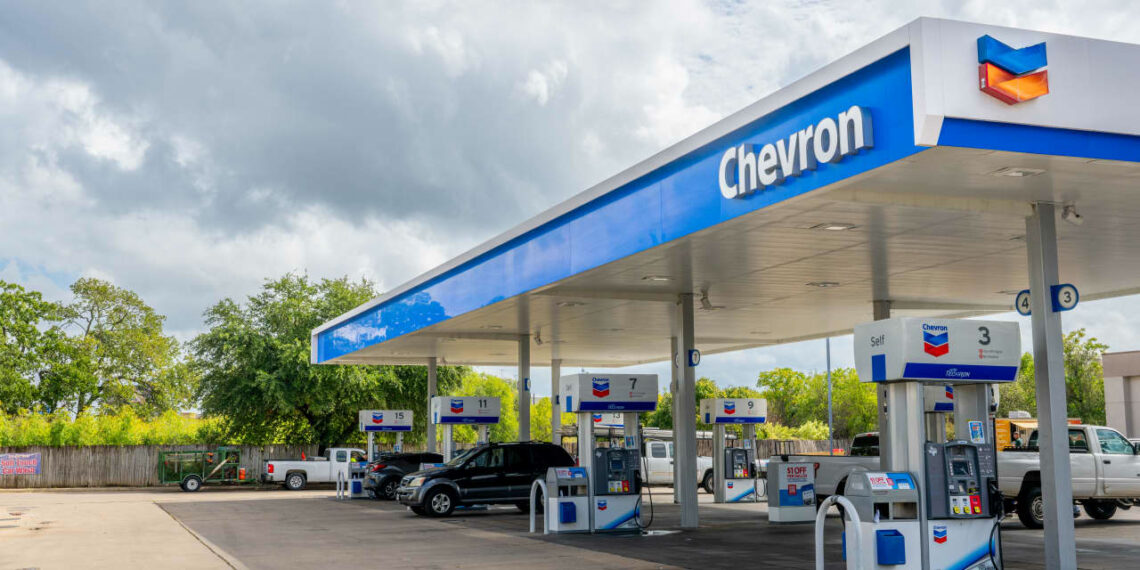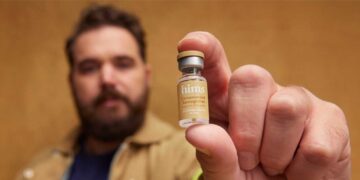Chevron
is closing factories in Iowa and Wisconsin that make truck fuel out of soybeans, corn and animal fats because government rules have made the business unprofitable, the company said this week.
Chevron’s retreat signals just how tough the clean fuels business has become as prices of the most important government-controlled credits have plunged.
The main federal clean fuel program is called the Renewable Fuel Standard. Refiners and other fossil fuel providers have to offset their deliveries of gasoline and diesel with cleaner alternatives like biodiesel or pay for credits known as renewable identification numbers, or RINs.
The value of biodiesel RINs—the kind Chevron was earning at the factories it closed—has fallen to 48 cents a gallon from $1.61 a year ago, according to OPIS, the Oil Price Information Service.
The decline hurts factories that make clean fuels because they depend on the credits to support operations. Other low-carbon fuel credits in California, Oregon, and Washington state have also fallen in the past year.
In some ways, the price crash is the result of a success: So many companies now make clean fuels that they account for more than half the fuel used by trucks in California and will soon power all of the heavy-duty city-owned vehicles in New York. But it’s also becoming a problem for the companies that make the stuff because they may need to slow production growth to remain profitable.
Important companies in the industry include
Darling Ingredients
and Finnish company
Neste,
as well as smaller clean-fuel producers like
Opal Fuels,
Gevo
and
Calumet Specialty Products.
All of their stocks are down by double-digits over the past year.
Big oil companies have also gotten involved.
Chevron
is one of the biggest producers, following its acquisition of Renewable Energy Group in 2022. Major refiners including Phillips 66 and
Marathon Petroleum
are transforming fossil fuel refineries into clean-energy plants.
The biggest problem for the industry is that the Environmental Protection Agency established renewable fuel volume rules last year that underestimated the growth of renewable fuels, according to Neville Fernandes, general manager of corporate affairs at Chevron Renewable Energy Group.
The EPA announced a renewable volume obligation—the amount of clean fuel that refiners have to make or buy—for biomass-based diesel of 2.82 billion gallons in 2023 and 3.04 billion in 2024. But producers in the U.S. made more than four billion gallons in 2023, and foreign producers exported nearly one billion gallons to the U.S., Fernandes noted.
“You have this massive supply and demand imbalance,” Fernandes said. “That was an arguably very bad miss by the EPA.”
The two plants that Chevron said it would close indefinitely make up a very small portion of U.S. supply. The Iowa one makes 30 million gallons a year of biodiesel. The Wisconsin one makes 20 million gallons. Before the closures, Chevron had capacity to produce 400 million gallons of biodiesel annually in various parts of the country and in Europe.
It also makes 90 million gallons of other clean fuels including renewable diesel, a faster-growing version of clean diesel that can be mixed directly into fuel tanks without having to be blended with fossil fuels. Chevron is expanding its renewable diesel plant in Louisiana so that it has capacity to produce 350 million gallons.
The rest of the company’s plants remain profitable, Fernandes said. The company remains on track to grow its capacity to 100,000 barrels of renewable fuels a day, up from about 30,000 today, the company said. That target isn’t chump change. It represents a significant portion of the roughly 3.7 million barrels of diesel used in the U.S. each day.
That said, the price crash threatens the industry’s growth. Fernandes said the EPA can still remedy the problem by revising the renewable volume obligation higher, which would boost the RINs prices. “The driver for demand is the Renewable Fuel Standard. If you don’t get that right, these RIN credits will drop dramatically.”
The EPA didn’t respond to a request for comment on Chevron’s criticisms and the agency’s plans. Currently, the EPA’s 2025 renewable volume obligations are below current production rates, which points to further problems for RIN values.
Adding new requirements for clean fuels would cost fossil fuel refiners money and could end up making diesel and gasoline more expensive.
Chevron’s criticisms are notable because the company is often on the other side of debates about government clean fuel regulations, arguing that they lead to higher fuel bills. The company has criticized California for its regulations, for instance, saying they make the cost of doing business in the state too high and end up hurting consumers.
Fernandes, however, said the company’s arguments aren’t contradictory.
“We are committed to—this sounds like motherhood and apple pie—affordable, reliable and cleaner energy,” Fernandes said. “This is a demonstration of our commitment to wanting regulation that will promote affordable, reliable and ever-cleaner energy. It has to be all three.”
Write to Avi Salzman at avi.salzman@barrons.com
Read the full article here








